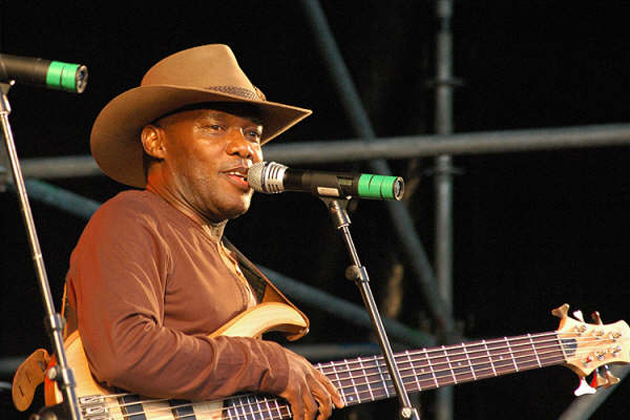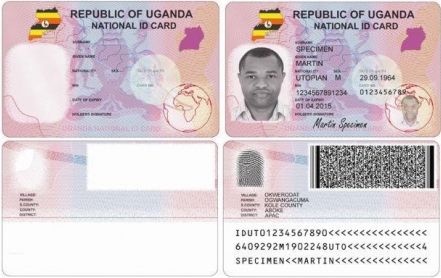Mountain gorillas live in the cool upper reaches of a handful of mountains that form a natural border between Uganda, Rwanda and the Democratic Republic of Congo. The experience varies greatly between each country
Essentials
The flights
Whether you trek after mountain gorillas in Rwanda, Uganda or the Congo, the most convenient international airport is in Rwanda’s capital city, Kigali. There are direct flights from Dubai a couple of days a week with RwandaAir. Otherwise, an indirect route is available via Nairobi with Kenya Airways. FlyDubai flies to Kinshasa in the Democratic Republic of Congo, via Entebbe in Uganda. Expect to pay from US$350 (Dh1,286) return, including taxes.
The tours
Superb ape-watching tours that take in all three gorilla countries mentioned above are run by Natinonal World Safaris . In September, the company will be operating a unique Ugandan ape safari guided by well-known primatologist Ben Garrod.
In the Democratic Republic of Congo, local operator Kivu Travel can organise pretty much any kind of safari throughout the Virunga National Park and elsewhere in eastern Congo.
Rwanda
Tiny Rwanda is the country most closely associated with gorilla watching, and many people will tell you that it’s the best place in which to see the gorillas. In many ways this statement is true. There are 10 groups of gorillas in Rwanda’s Volcanoes National Park that are habituated to humans. Some of these groups are deep into the forest and getting to them can involve a lot of slogging up and down muddy mountain slopes. Other groups tend to keep themselves close to the forest fringe and the edge of the park, which means that those people less able to walk long distances through tangled and muddy forest terrain can easily find a group within a few minutes of setting out. If you appreciate a dose of luxury on your holidays, then Rwanda is definitely the place for you. The country is actively courting the top-end safari market and there are an increasing number of luxurious lodges, including the newly opened Bisate Lodge.
However, there are some negatives to Rwandan gorilla viewing. Firstly, when you arrive at park headquarters on the morning of your gorilla trek, the bands of traditional dancers, tourist-tat salespeople and masses of other visitors adjusting their GoPros and updating their Instagram can make the whole thing seem somewhat contrived. Secondly, and for many people a more significant turn-off, is the cost. Rwanda has recently doubled the price of gorilla permits to an eye-watering US$1,500 (Dh5,510) per person. Yep, there’s a reason this is considered a once-in-a-lifetime experience. The idea is that by increasing the price and significantly raising the bar in terms of luxury lodges and comfortable travel, Rwanda will be able to generate more money from fewer tourists and use this money for conservation programmes such as re-forestation schemes. And for now, that seems to be working. For example, in the year that the Bisate Lodge has been around, the team there have managed to plant 17,000 native trees to extend gorilla habitat.
Uganda
Uganda is the next most popular country in which to visit the gorillas. There’s a lot less razzmatazz associated with gorilla viewing in Uganda, where the experience is much earthier and, some might say, more authentic. For example, there are no dance troupes or free cups of coffee waiting for you at the gorilla-tracking meeting points, access roads are far rougher and distances longer. There are two distinct areas in Uganda in which to see mountain gorillas. The Mgahinga Gorilla National Park is the Ugandan portion of the Virunga Mountains. It’s the smallest national park in the country and home to only one group of habituated gorillas. Although this makes the park very quiet, there is the issue that the gorillas can range over a wide area and occasionally even cross into Rwanda or Congo. The Bwindi Impenetrable National Park is by far the most popular park in Uganda in which to track gorillas. There are lots of habituated groups spread across a wide area and you can often choose whether you want to track a distant group or a closer one. However, the forest is very dense and even fit walkers used to long mountain hikes will likely find it exhausting. Gorilla tracking in Uganda is much cheaper than Rwanda: currently permits cost $600 (Dh2,204) (for both Bwindi or Mgahinga). If you don’t mind getting a bit damp, then cut-price “rainy season” permits (April, May and November) are available for $450 (Dh1,653).
In all three countries, tourist visits to the gorillas are limited to one hour, but in the Bwindi park, there are two groups in the latter stages of being habituated to humans. This task is being undertaken by park rangers who spend most of the day close to the group trying to get them completely used to human company. The exciting news is that it’s now possible to join the rangers in this process – by doing so, you will get to spend about four hours with the gorillas.
The package costs $1,500 (Dh5,510). It’s certainly expensive, but in my opinion, it’s the single best gorilla experience out there.
Democratic Republic of Congo
Dwarfing all countries around it, the Democratic Republic of Congo is a country of superlatives. A vast and deeply troubled country of jungles, bubbling volcanoes, mile-wide rivers and adventure writ large. Unfortunately, the country’s reputation for instability proceeds it and only a very few people come to visit the gorillas here.
The mountain gorillas live in the southern sector of the enormous Virunga National Park in eastern Congo. A Unesco World Heritage Site and Africa’s oldest national park, as well as one of its most bio-diverse, Virunga is also one of the most threatened of the major national parks in Africa. Mention a potential visit to Congo and you can be certain that every other person will try to scare you off visiting, and while it would be foolish to try to say Congo isn’t without its problems, the park authorities are very diligent about tourist security. They know that they cannot afford a single incident to take place, so at the merest hint of trouble, the park is closed to tourists. The upshot of this is that if the authorities say it’s safe to visit, then you can be assured that it really is. And what a visit it will be. There are lots of habituated gorilla groups here, the viewing is normally superb and low visitor numbers mean that it’s common to have only one or two other tourists visiting the gorillas with you. The other advantage of gorilla viewing in the Congo is that by visiting, you know that you’re financially helping a park, and a region, that needs every bit of help it can possibly get.
Congo is the cheapest place to see mountain gorillas with permits currently costing $400 (Dh1,469). During the rainy season between mid-March and mid-May, permit prices drop to $200 (Dh735).
While you might expect Congo to suit only the most adventurous traveller happy to rough it, gorilla tracking in Virunga will probably surprise you. The park operates several camps, all of which are very comfortable and excellent value for money – the Mikeno Lodge might be one of the best-value top-end lodges in all of East Africa. And if all this isn’t enough, when you’re done with Congolese mountain gorilla viewing, you can track habituated chimpanzees, visit the only mountain gorilla orphanage in the world and, for an experience that most rate as on a par with the gorilla tracking, stand on the rim of Mount Nyiragongo and stare in awe at the world’s largest permanent lava lake belching and boiling away below.




